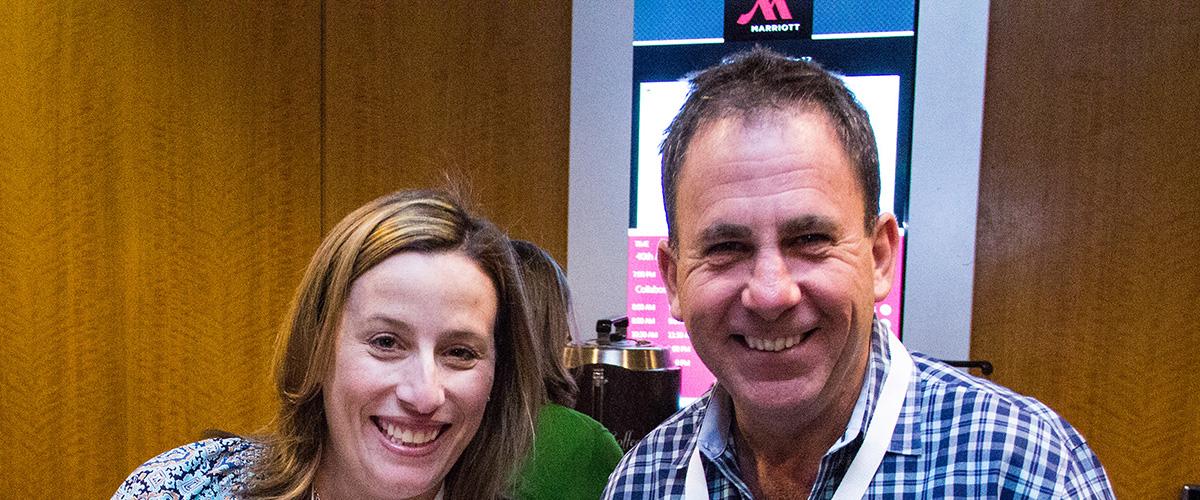MDF has completed its annual competition for 2020 PhD Trainee and Postdoctoral Research Fellowships in Myotonic Dystrophy. Trainees could apply for support for projects focused on basic, translational, or clinical research in myotonic dystrophy (DM). This program not only supports meritorious research, but also helps continue to build a critical mass of researchers engaged in working on DM.
We are proud to announce MDF made the following Fellowship Grants in 2020 in partnership with MDF UK:
Fellowships
Raphael Benhamou, PhD
Scripps Research Institute, Florida
Dr. Benhamou’s study “Targeting the RNA that Causes DM2 for Degradation with Small Molecules” focuses on inactivating and/or eliminating the DM2 RNA with drug-like small molecules. By engineering small molecules that bind the RNArepeat expansion the goal is to: (i) synthesize potent, selective inhibitors by using the RNA repeat as a template. This on-site drug synthesis approach only occurs in DM2-affected cells, leaving healthy cells unexposed to the active drug; and (ii) cleave the RNA, thereby eliminating the toxin from DM2-affected cells altogether. Each compound type will be fully evaluated in DM2 patient-derived fibroblasts and fibroblasts from healthy donors. These groundbreaking approaches have the potential to establish a completely new paradigms for designing small molecules that target toxic structured RNAs implicated in DM2 disease.
Talita Conte, PhD
University of Montreal
Dr. Conte’s study “Novel strategy targeting muscle stem cells as a therapeutic approach for myotonic dystrophy type 2” proposes to use a new class of drugs that has shown encouraging results improving the muscle function of different degenerative conditions, such as aging. These drugs act by eliminating specifically dysfunctional cells and leaving only the competent cells to restore muscle function and regeneration. Thus, the study first proposes to screen a variety of these drugs on the muscle stem cells of patients affected by DM1 to find the most potent one. They plan to validate the lead compound in vivo on a mouse model of DM1 to evaluate its effect on muscle function. Overall, the research plan proposes to target muscle stem cells as a new therapeutic approach to mitigate DM1. This novel field of research has shown promising results in other degenerative conditions (aging) but it has not been explored in DM1. Therefore, it will bring new perspectives to patients affect by DM1 who have very limited pharmacological options to improve their quality of life.
Jana Jenquin, PhD
University of Florida
The goal of the first two aims of Dr. Jenquin’s study “Improving the activity of diamidines for potential therapeutic use for patients with myotonic dystrophy types 1 and 2” is to characterize our current lead small molecule by assessing how well, and by what mechanism, it rescues DM-associated molecular markers in DM1 and DM2 cell and animal models. The third aim of the study is to synthesize more compounds related to the lead compound with an emphasis on compounds predicted to cross the blood brain barrier to potentially address the cognitive symptoms associated with DM and continue to improve these compounds as potential therapeutics. The goal of the study is to get the best in class of these compounds into clinical trials for DM1 and DM2 to help patients and their families.
Sarah Overby
University of Valencia
The study “Restoration of MBNL proteins through miRNA blocking as DM1 therapy” will use antisense oligonucleotides (ASOs) to target a different type of DNA called micro RNAs (miRNAs) by binding on the MBNL RNA transcripts. This way, miRNAs are blocked from binding there and the transcript is free to be translated into protein. This is a promising strategy because it does not need a high concentration of blockmiRs to deliver to this part of the cell. Subsequently, this could lead to less unwanted off-target effects. This technique has already shown positive results in DM1 cells by increasing the production of MBNL protein in the rest of the cell and rescuing some of the downstream functions that the trapped MBNL cannot perform. The specific aims of the study are to 1) evaluate blockmiRs administered to HSALR mice to determine if the therapeutic effects are similar to those observed in DM1 myoblasts and 2) develop and evaluate of P-PMO BlockmiRs in DM1 myoblasts.
MDF congratulates recipients of the 2020 PhD. Trainee and Postdoctoral Research Fellowships in Myotonic Dystrophy and encourages others in the DM community to offer their support.
Learn more about past Fellowship & Grant Recipients.

